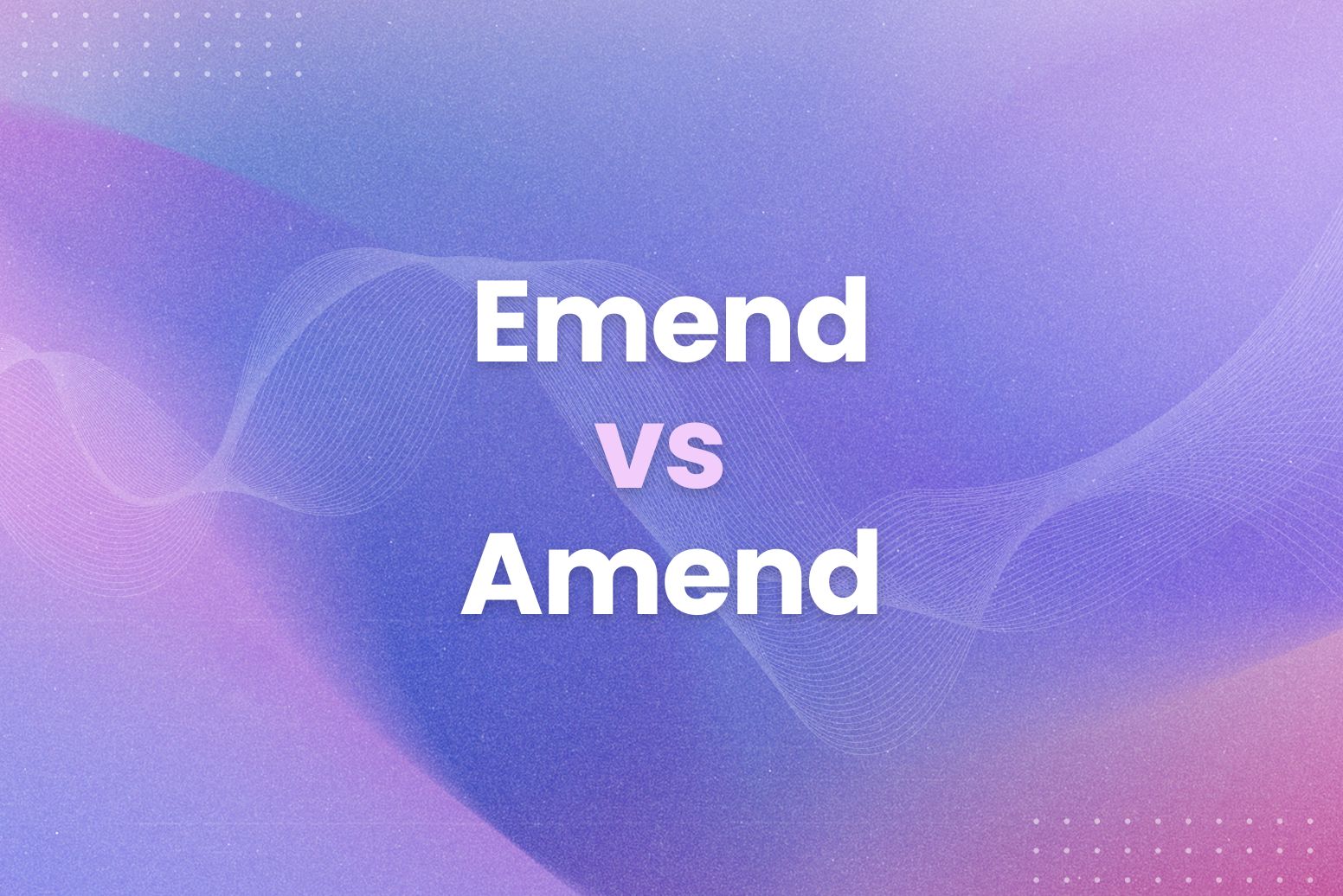Have you ever read a poem or story where a single comparison stretches across multiple sentences—or even an entire piece—giving it a deeper, more vivid meaning? That’s the power of an extended metaphor. To give a clear extended metaphor definition, it’s like taking a single spark of an idea and turning it into a blazing fire of imagery. Whether it’s Robert Frost’s “The Road Not Taken” or Shakespeare’s “Juliet is the Sun”, extended metaphors are the secret ingredient that makes literary works timeless, powerful, and unforgettable.

So, what exactly is an extended metaphor or even an extended metaphor definition? And how can you use it to enrich your writing?
Enhance your extended metaphors with flawless grammar using Arvin AI’s Grammar Tool.
What is the Extended Metaphor Definition?
An extended metaphor is a literary device where a single comparison between two unrelated things is sustained throughout a passage, paragraph, or even an entire work. Unlike regular metaphors, which are short and punchy, extended metaphors develop an idea step by step, adding layers of meaning and imagery as the writing progresses.

Think of it as a metaphor on steroids: instead of saying “life is a journey” and stopping there, an extended metaphor takes you along for the ride, describing the roads, detours, bumps, and milestones that make up life.
Extended Metaphors Examples
1. “O Captain! My Captain!” by Walt Whitman
Whitman’s iconic poem mourns Abraham Lincoln’s death through an extended metaphor comparing Lincoln to the captain of a ship and America to a vessel enduring a storm:
“O Captain! my Captain! our fearful trip is done,
The ship has weathered every rack, the prize we sought is won…”
At first glance, it’s a tribute to a ship’s captain guiding his vessel through a dangerous journey. But as you peel back the layers, you realize the ship represents the United States navigating the Civil War, with Lincoln at the helm. The “prize” refers to victory and reunification, but the irony lies in Lincoln’s death just as success is achieved.
This metaphor deepens the emotional weight of the poem—it’s not just about a nation’s leader but about sacrifice, leadership, and the bittersweet nature of triumph. Whitman transforms grief into art by allowing readers to feel the loss as though they, too, were aboard the ship.
2. “Mother to Son” by Langston Hughes
Langston Hughes masterfully compares life to a staircase:
“Life for me ain’t been no crystal stair.
It’s had tacks in it,
And splinters,
And boards torn up…”

Here, the extended metaphor transforms life into a worn-down staircase—far from polished or perfect. The “crystal stair” represents privilege and ease, something the mother has never known. Instead, her staircase is riddled with pain (splinters and tacks) and hardships (boards torn up), yet she keeps climbing.
What makes this metaphor powerful is its relatability. It’s a raw, unfiltered message about resilience. The mother’s voice, unwavering and strong, becomes a symbol of perseverance through adversity—a universal truth that resonates across time and cultures.
Extended Metaphors Effect
1. Making Abstract Ideas Concrete
Extended metaphors simplify complex or abstract concepts by comparing them to something familiar.
“Grief is like an ocean. Some days, the waves are gentle and rhythmic, lapping at your feet. Other days, they crash over you, pulling you under, leaving you gasping for air.”
Here, grief—an abstract emotion—is transformed into the ocean. The extended metaphor helps readers relate to the unpredictability of grief while evoking powerful imagery of its ebb and flow.
2. Deepening Emotional Connection
Extended metaphors create vivid, relatable imagery that draws readers into the emotional core of a piece. They don’t just describe emotions—they make readers experience them on a visceral level.
“Life for me ain’t been no crystal stair. It’s had tacks in it, and splinters…”
By extending this metaphor, Hughes allows readers to feel the mother’s struggles and perseverance. The staircase becomes a symbol of life’s hardships—unpolished, difficult, and yet something to keep climbing. With each detail, the audience connects more deeply to the emotion and the resilience woven into the message.
3. Adding Symbolism and Layers of Meaning
Extended metaphors often carry symbolic weight, giving depth to characters, themes, or ideas. They act like a bridge between literal events and hidden meanings, adding layers for readers to unravel.
“But soft, what light through yonder window breaks?
It is the east, and Juliet is the sun.”
Here, Juliet isn’t literally the sun. However, through the extended metaphor, she becomes a symbol of light, hope, and warmth in Romeo’s life. As the story progresses, the metaphor deepens, symbolizing the brightness of their love while foreshadowing its tragic, fiery end. By sustaining the comparison, Shakespeare adds poetic depth that resonates emotionally with the audience.
4. Creating Visual Impact
Extended metaphors make writing visually dynamic, offering striking imagery that transforms words into pictures. Instead of flat descriptions, they allow readers to see the ideas being presented.
“Anxiety is like a shadow—always lurking, following you silently through each step. Sometimes it looms larger than life, stretching over everything you do, and other times it stays small, unnoticed—but it never really disappears.”
This comparison turns an intangible feeling into something visually vivid. Readers can immediately picture the shadow of anxiety, growing and shrinking, yet always present. By sustaining the imagery, the metaphor highlights how overwhelming emotions can become, making the abstract more real and relatable.
5. Adding Humor and Wit
Extended metaphors aren’t always serious—they can also be playful and entertaining. Writers often use them to add clever twists or lighthearted moments to otherwise dry or mundane topics.
“Getting through Monday morning is like taming a wild beast. First, you tiptoe into the office, hoping it won’t pounce. Then you feed it coffee, lots of coffee, to keep it calm. If you’re lucky, by noon, you’ll have it rolling over for deadlines instead of biting your head off.”
By comparing Mondays to a wild beast, the metaphor injects humor into a shared struggle. Not only does it entertain, but it also creates an instant connection with readers who can relate to the “beast-like” start of the week.
Key Features of Extended Metaphors
- Sustained Comparison: It stretches the metaphor across multiple sentences or sections.
- Imagery and Symbolism: It creates vivid pictures and connects abstract ideas to real-life visuals.
- Deeper Meaning: It allows writers to explore themes or emotions in more detail.
Famous Examples of Extended Metaphors in Literature
1. Robert Frost’s “The Road Not Taken”
In this famous poem, Robert Frost uses an extended metaphor to compare life’s choices to roads in a yellow wood:

“Two roads diverged in a yellow wood,
And sorry I could not travel both…”
Here, the roads represent the choices we make, while the act of choosing symbolizes life’s uncertainty. Frost continues this metaphor throughout the poem, ultimately reflecting on regret, indecision, and individuality.
2. Shakespeare’s “Romeo and Juliet”
Shakespeare was a master of extended metaphors, especially in Romeo and Juliet. One iconic example is when Romeo compares Juliet to the sun:
“Arise, fair sun, and kill the envious moon
Who is already sick and pale with grief…”
The metaphor doesn’t stop at calling Juliet the sun. Romeo continues to elaborate, contrasting her light and beauty with the “envious moon,” a symbol of all that’s dull or lesser in comparison.
3. Emily Dickinson’s “Hope is the Thing with Feathers”
Emily Dickinson compares hope to a bird in this extended metaphor:
“Hope is the thing with feathers
That perches in the soul,
And sings the tune without the words,
And never stops at all…”
By extending the metaphor, Dickinson beautifully conveys the resilience and constant presence of hope, as if it’s a small bird that never tires of lifting our spirits.
Whether you’re weaving extended metaphors or crafting a masterpiece, Arvin AI ensures every word shines.
Extended Metaphor Synonym
Sustained Metaphor
A metaphor that runs continuously through a passage or work, enriching its central theme and drawing readers into its imagery.
Example: In Moby Dick by Herman Melville, the white whale serves as a sustained metaphor for Captain Ahab’s obsession with conquering the unconquerable.
- This metaphor stretches across the novel, symbolizing humanity’s struggle with nature, fate, and inner demons.
Conceit
A clever, often startling comparison between two seemingly unrelated things, particularly common in metaphysical poetry.
Example: John Donne’s “The Flea” uses a flea biting two lovers as a conceit for physical union, suggesting that the insect contains “their blood mingled.”
- While absurd at first glance, this metaphor deepens as Donne spins it out, making a witty argument for intimacy.
Why It Works: The conceit surprises the reader but also forces them to reconsider relationships in a fresh, intellectual way.
Prolonged Analogy
An extended comparison that gradually reveals itself, making abstract ideas more accessible or concrete.
Example: In Animal Farm by George Orwell, the farm animals’ rebellion serves as a prolonged analogyfor the Russian Revolution.
Developed Symbolism
A recurring image, character, or object that evolves in meaning throughout a narrative.
Example: In Lord of the Flies by William Golding, the conch shell symbolizes order and civilization.
- Over time, its decline and destruction become a developed symbol for the collapse of societal structure and humanity’s descent into chaos.
Why It Works: By evolving over the course of the story, the symbolism creates layers of meaning that resonate long after the story ends.
Allegorical Comparison
An extended metaphor that forms the foundation of an allegory, where everything represents a larger idea or theme.
Example: In The Allegory of the Cave by Plato, the cave itself is an allegorical comparison for ignorance, and the journey out of it symbolizes enlightenment.
- The metaphor drives the entire philosophical discussion, urging readers to question their perception of reality.
Why It Works: It transforms a philosophical argument into a relatable visual experience, allowing readers to grasp deeper truths.
Lengthened Imagery
An image that begins as a simple idea but stretches into a deeper or more symbolic meaning.
Example: In Robert Frost’s “The Road Not Taken”, the two diverging paths serve as lengthened imageryfor life choices and the weight of decisions.
- The paths begin as literal roads but come to represent opportunity, regret, and individuality.
Why It Works: The imagery grows with the reader’s interpretation, connecting universal themes to deeply personal experiences.
Extended Metaphor vs Metaphor
| Aspect | Metaphor | Extended Metaphor |
|---|
| Definition | A brief comparison where one thing is described as another. | A metaphor that is developed and expanded across multiple lines. |
| Length | Short and concise—usually a single phrase or sentence. | Lengthy and detailed—can span several sentences or an entire work. |
| Depth of Meaning | Delivers a quick and impactful idea. | Explores themes in greater depth, adding complexity and symbolism. |
| Purpose | Provides clarity and immediate imagery. | Creates a layered and immersive experience for the reader. |
| Usage | Common in speeches, headlines, and everyday expressions. | Frequently used in literature, poetry, essays, and speeches. |
| Example | “Time is money.” | “Time is a river, flowing endlessly, pulling us along its currents until we reach the sea of eternity.” |
| Focus | One central comparison. | Explores multiple aspects of the central comparison. |
| Effect | Sharp and memorable. | Thought-provoking and emotionally resonant. |
| Examples in Literature | “All the world’s a stage.” – William Shakespeare | “Hope is the thing with feathers.” – Emily Dickinson |
How to Create Your Own Extended Metaphor

Choose a Central Concept
Start with a strong metaphor. For example, “Time is a thief.”
Expand on the Comparison
Build on the initial metaphor. How does time “steal” from you?
- It sneaks away with your youth.
- It swipes opportunities you didn’t take.
- It leaves you with memories as reminders of what’s lost.
Add Imagery and Symbolism
Use vivid descriptions and sensory details to strengthen the metaphor.
- Time’s footsteps echo in the silence of missed chances.
Stay Consistent
Keep the comparison relevant throughout the passage. Avoid introducing unrelated imagery.
Final Words
The beauty of an extended metaphor lies in its ability to transform abstract concepts into tangible imagery, drawing readers into a world of layered meanings. Whether it’s used in classic literature, modern poetry, or your favorite movie, extended metaphors provide a framework for exploring emotions and ideas in ways that resonate deeply.
Now that you have a solid grasp of the extended metaphor definition, challenge yourself to identify and appreciate how this device adds depth and creativity to the stories you love with Arvin AI’s Grammar Checker.

After all, some of the most memorable pieces of writing are built on the foundation of a well-crafted extended metaphor.
FAQ
An extended metaphor is a literary device that takes a single comparison and develops it across multiple lines, sentences, or even paragraphs. Unlike a regular metaphor, which is usually brief, an extended metaphor weaves a consistent image or theme throughout a piece of text to reinforce its message.
A metaphoric extension takes a regular metaphor and elaborates on it with further details or imagery. For instance, in Robert Frost’s “The Road Not Taken,” the two diverging roads are a metaphor for life choices. Frost extends this metaphor by describing how one road is “grassy and wanted wear,” symbolizing the less conventional path in life. The metaphor continues, painting life’s decisions as roads that define our journey.
In GCSE English Literature, an extended metaphor refers to a sustained comparison that is developed over several lines or stanzas in poetry, prose, or plays. It is often analyzed for its deeper meaning and imagery. For example, in “O Captain! My Captain!” by Walt Whitman, the captain represents Abraham Lincoln, and the ship symbolizes the United States. This extended metaphor carries through the entire poem to highlight leadership and loss.
The extended metaphor definition is best explained as a creative comparison that is expanded beyond a single phrase to add depth, imagery, and symbolism to writing. It allows writers to explore abstract ideas in a concrete way. For instance, life might be compared to a river—flowing, changing, and meeting obstacles. Over time, this image can develop into a powerful reflection on personal growth, challenges, and the passage of time.






